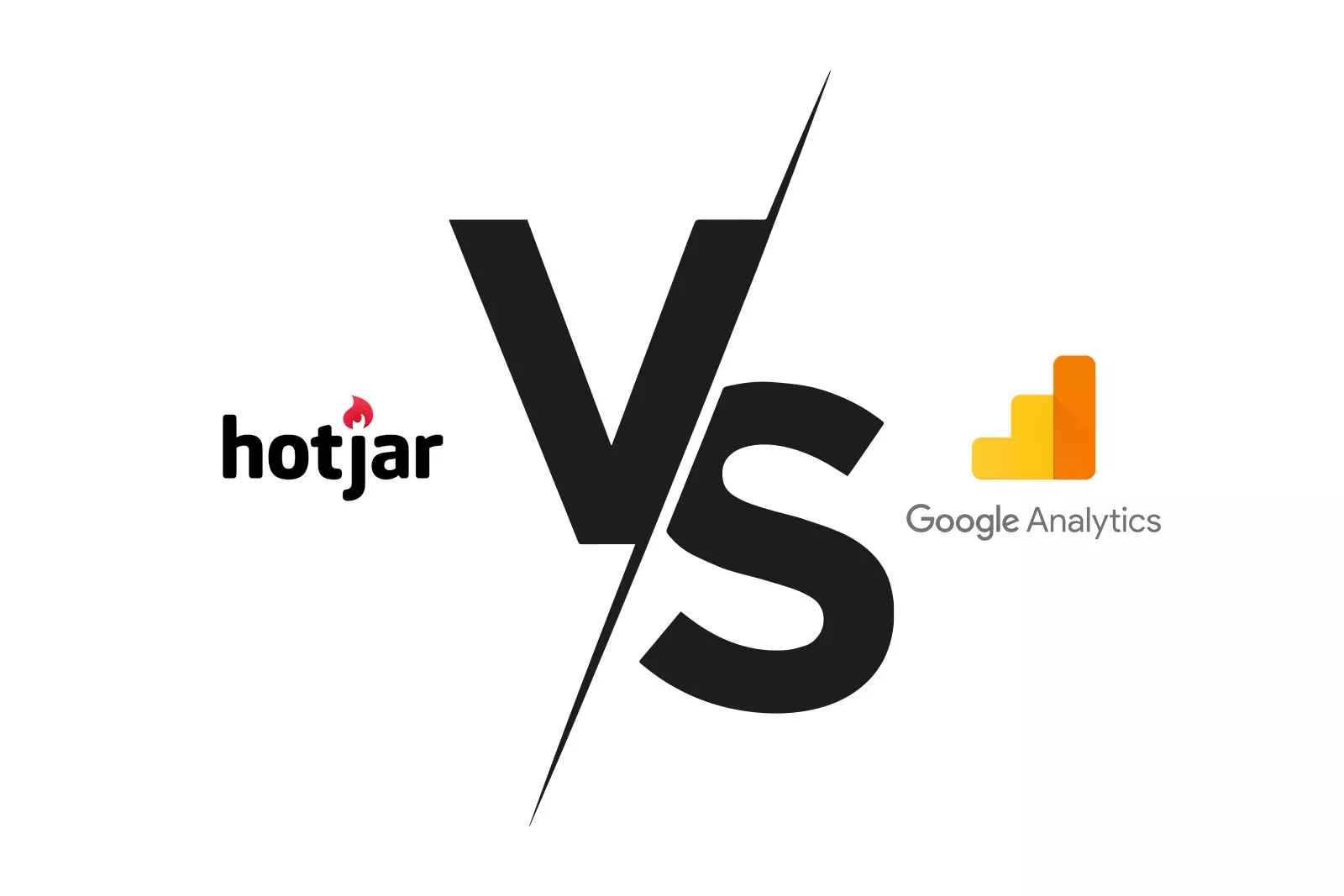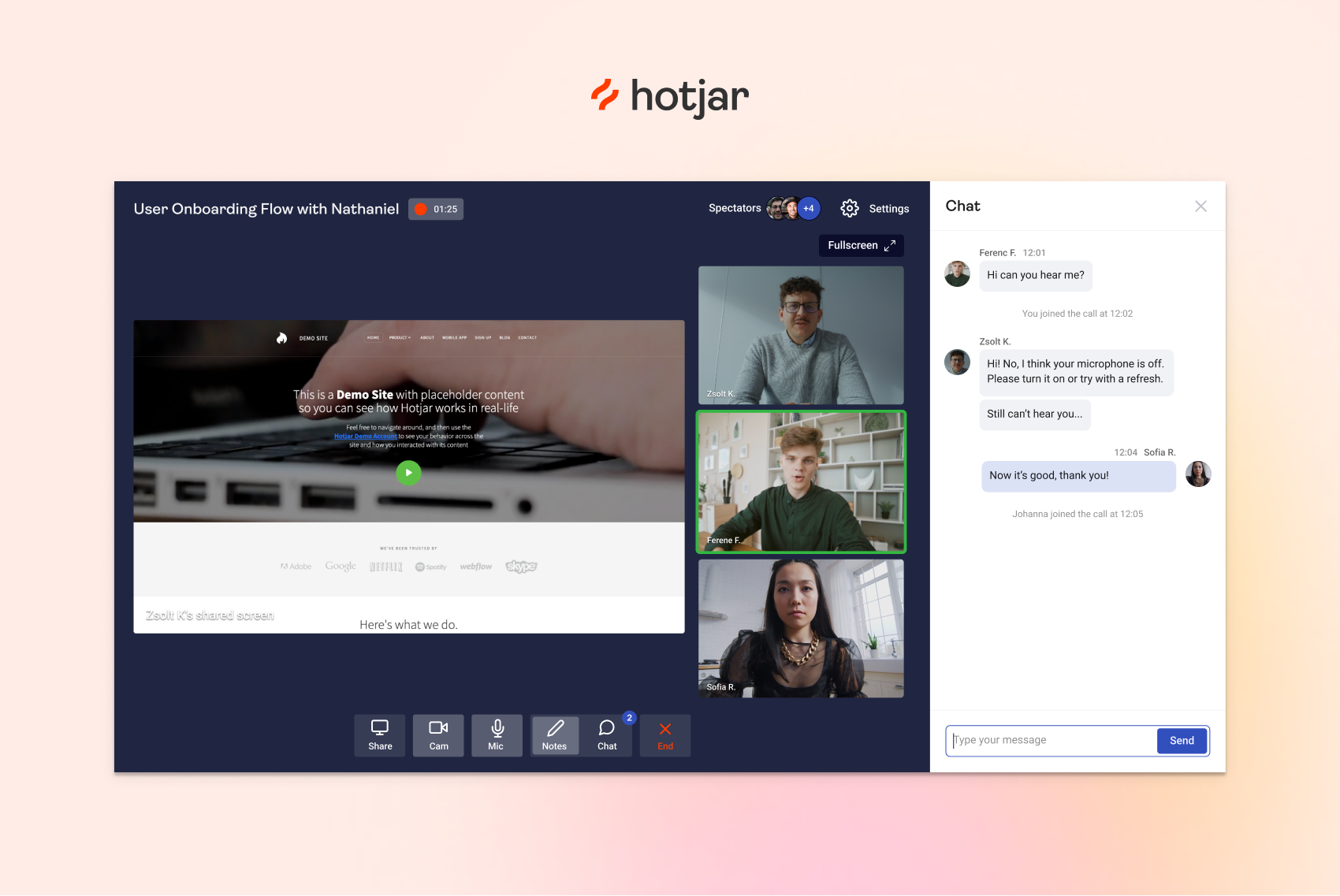As an online business owner, you must know how your users interact with your web app, landing page, website, or...

Product Survey Questions to Help You Build a Top-Notch Product
So you’ve built a product that solves a specific problem of your target audience. And in your humble opinion, it’s perfect. Maybe even better than your competitors’!
Unfortunately, the opinions that truly matter are the ones that come from your customers.
Is your product working as well as it should? Does it serve all customer needs like you promised? Are there any points for improvement? If you want to answer these questions, you need to see your product from a customer’s perspective.
And to do that, you’ll need a product survey.
In this guide, we’ll go over the definition of product surveys, product survey question examples you can use, and the best practices to follow if you want to run an effective survey every time.
What is a Product Survey?
A product survey is a tool businesses use to check in with customers about their experiences and opinions on a product.
It’s a way to ask your customers directly what they think works, what doesn’t, and what could make their experience better, which is also known as qualitative data. Through these surveys, you can better understand how your product is performing and what tweaks might be needed to keep your customers happy.
At a glance, here’s the data you can gather from product survey responses:
- Customer experience
- Customer satisfaction
- User expectations
- Initial impression
- Missing features
However, keep in mind that product surveys aren’t just for existing products. You can also conduct these surveys before developing a product, re-launching a product, or even when that product is merely an idea for the time being.
Why Do You Need Product Surveys?
Product surveys collect feedback from the people that matter the most: the ones using (or will use) your product or service. This kind of customer feedback can help you tick off many business checklist items, such as:
Understanding Customer Expectations
Product surveys are like having a direct line to your customers’ thoughts; they tell you exactly what your customers love and what gets on their nerves about your products.
This straight-from-the-source feedback is super valuable because it helps you tweak your offerings to better meet their needs and expectations.
Improving Your Products
Feedback is a goldmine for figuring out how to make your products even better. Regular surveys let you spot the good, the bad, and the ugly, so you can keep what works and fix what doesn’t. This ongoing input is necessary to make sure that every update or tweak really hits the mark.
Benchmarking Customer Satisfaction
Surveys help you keep tabs on how happy (or not) customers are with what you’re offering. Understanding customer satisfaction levels is key to predicting whether they’ll come back, buy more, or even recommend your stuff to others—all of which are vital for your business’s growth.
Steering Product Development
The insights you get from surveys do more than just help polish existing products; they also guide your future projects. Knowing what features your customers are itching for or spotting new needs can help you figure out what to build next and keep your lineup fresh and in demand.
Catching Trends Early
Feedback from customers can clue you in on new trends and shifts in the market before they go mainstream. This early heads-up can be a game-changer, allowing you to adapt quickly and maybe even get ahead of the competition by being the first to roll out new features or products.
Building Stronger Customer Bonds
Regular surveys show your customers you really care about their opinions and want to keep improving. This not only strengthens your relationship with them but also increases their loyalty to your brand.
When customers feel valued and heard, they’re more likely to be loyal and even become ambassadors for your business.
Minimizing Customer Churn
By quickly addressing issues that surveys bring up, you can solve problems before they drive your customers into the arms of your competitors. Showing that you’re responsive and willing to make changes can significantly improve customer retention and keep your base solid and engaged.
When Should You Run Product Surveys?
Running product surveys at the right times can significantly increase the quality and usefulness of the feedback you gather. Here’s when to consider rolling them out for the best impact:
Right After a Purchase
Shoot a survey their way right after they’ve made a purchase. It’s when their experience is fresh and they can give you the nitty-gritty on how they feel about the buying process, their first impressions of the product, and their initial satisfaction.
After You Launch or Update a Product
Got a new product or just updated an existing one? That’s a perfect time to check in with your customers. It helps you catch their raw reactions and understand whether the new features hit the mark or missed it.
Periodically Throughout the Year
Don’t just wait for big events; keep a regular survey schedule, too. This helps you keep a constant pulse on customer satisfaction, spot trends in their feedback, and gauge the health of your products over time.
When You Notice a Trend in Feedback
If you start noticing patterns or frequent comments about a specific issue or feature, that’s your sign to dig deeper.
A targeted survey asking about specific aspects can help you get to the bottom of these trends and decide what action to take next.
Before a Major Decision
If you’re unsure about a significant change, like discontinuing a product or introducing a new line, sending out a survey can help guide your decision.
Getting input from your customers can make sure that your choice aligns with their needs and expectations.
Product Feedback Survey Questions to Ask Your Customers
Creating the perfect product feedback survey is all about asking the right questions. Of course, this depends on what stage you are in and what information you want to gather from your customers.
Here are the main types of product survey questions and some examples.
1. Product Ideation and Development Questions
Any product manager will tell you that it’s incredibly important to get as much relevant feedback as you can when you’re just starting out with a new product or improving an existing one.
Product ideation and development questions are all about getting into the heads of your target market. These questions help you on what your customers need, what they like, and how they might react to new features or ideas.
- What primary problem do you want our product to solve?
- If you could change one thing about our current product, what would it be?
- What features are most important to you in [product category]?
- How often do you use products similar to ours?
- On a scale of 1 to 10, how would you rate our current product? What would make it a 10?
- What would make you choose our product over competitors’ products?
- Are there any additional functionalities you wish our product included?
- How do you feel about the pricing of our current products? Are they good value for money?
- Which other products in the market do you consider before making a purchase? Why?
- What’s missing from the current products on the market that you would love to see?
2. Post-Launch Product Survey Questions
After launching a new product or updating an existing one, you should check in and see how it’s going down with your customers.
Post-launch product survey questions help you gauge how satisfied people are, how easy the product is to use, and whether it lives up to their expectations.
This kind of feedback is a must for making any fixes needed and guiding any improvements early in the game.
- How would you rate your overall satisfaction with our new product?
- What is your favorite feature of the new product, and why?
- Have you encountered any issues while using our product? If so, what were they?
- Is there anything about the product that didn’t meet your expectations?
- How easy is it to use our product? Are there any features that are difficult to understand or use?
- Would you recommend our new product to others? Why or why not?
- Compared to our previous version, how do you feel about this new update?
- What additional features would you like to see in future updates?
- How likely are you to purchase this product again or other products from our brand?
- Do you have any suggestions for improving our product?
3. Pre-Purchase Product Survey Questions
Let’s shift our focus to existing products that have been on your virtual shelf for a considerable amount of time.
Pre-purchase product survey questions dive into what your customers are thinking before they decide to make a purchase. These questions help you understand what drives their decision-making, from how they first hear about your product to their thoughts on its price and value.
By getting into their pre-purchase experience, you can pinpoint what might be holding them back and find ways to make their journey to buying smoother and more appealing (for both existing and prospective customers).
Discovery
Product discovery questions dig into where your customers get their info, how easy it is for them to find what they need about your product, and what pulls them towards your product over others.
Getting valuable data on their discovery process helps you boost your product’s visibility and make sure the right details pop up where and when they matter most.
- How did you first hear about our product?
- What type of information do you look for when considering this kind of product?
- What would make our product stand out more while you’re searching for options?
- How easy is it to find information about our product online?
- What convinced you to consider our product over others?
- Are there certain features or benefits you wish were easier to find information about?
- What doubts or hesitations do you have when looking at our product?
- In terms of information, what could we do better to help you understand our product?
- Who or what influences your decision the most when choosing this type of product?
- How could we improve our online presence to make our product more appealing to you?
Pricing
Before anyone pulls out their wallet, it’s important to know what they think about your product’s price. These pricing questions are all about getting into your customers’ heads to see how they feel about what you’re charging.
Such customer feedback can help you nail your pricing strategy to meet both market expectations and your customers’ budgets.
- How do you feel about the price of our product compared to similar products out there?
- Does the price of our product feel fair to you for what you get?
- Would a flexible payment option make our product more appealing to you?
- How likely are you to purchase this product at the current price point?
- If our product was slightly more expensive but included additional features, would you still be interested?
- What’s the maximum you would be willing to pay for a product like ours?
- Do you think there are any features our product lacks that, if included, would make it worth more to you?
- How important is price in your decision to purchase this type of product?
- Would you be more likely to buy our product if we offered a discount or promotional pricing?
- What pricing information do you feel is missing or unclear about our product?
4. Questions About Your Website and the Purchasing Process
Understanding how customers interact with your website and navigate the purchasing process can provide important user insights into areas of friction and opportunities for improvement.
More specifically, asking targeted questions can uncover difficulties customers might face while trying to make a purchase and gather feedback for improving the user experience.
- How easy was it to find the product you were looking for on our website?
- Did you experience any issues during the checkout process?
- How clear and understandable was the information about the products on our website?
- Was there enough detail about the product features, benefits, and specifications?
- How visually appealing do you find our website?
- Did our website load quickly enough for you?
- Was it easy to navigate our website from finding products to checking out?
- How secure did you feel about entering your payment information on our website?
- Were there any barriers or frustrations you experienced while using our website?
- Do you have any suggestions on how we can improve your online shopping experience?
5. Post-Purchase Survey Questions
After your customers have made a purchase, it’s helpful to check in and see how things are going. In fact, it’s probably the best time to collect customer feedback.
Post-purchase survey questions can help you understand how happy your customers are with what they bought, any issues they might have bumped into, and whether they’d shop with you again.
- How happy are you with the product you bought?
- Did the product live up to your expectations, exceed them, or not quite get there?
- Have you run into any problems with the product since you bought it?
- How likely are you to come back and buy from us again?
- Would you recommend our product to your friends or family? Why or why not?
- How do you feel about the value for money of the product?
- What changes would you suggest for this product?
- How was your experience dealing with our customer service team?
- Was the product packaged nicely and arrived in good condition?
- Is there anything else you’d like to share about your experience with us?
Product Survey Best Practices to Help You Gain Valuable Insights
Running effective product feedback surveys can have a huge impact on your understanding of what your customers think and how you can make your products better—but only if you do it right!
Here are some solid tips to help you collect valuable insights:
Ask The Right People
Make sure your survey is hitting the right inboxes or screens. You want feedback from people who actually use or care about your products, preferably your loyal customers!
Segmenting your audience helps ensure that you hear from the people whose opinions really matter regarding the issues you’re exploring.
Mix Up Your Questions
Throw in a mix of different question types to keep things interesting and useful. Use multiple-choice for quick, clear answers and add some open-ended questions to let people dive deeper into their thoughts. This way, you get the best of both worlds—straight stats and personal insights.
If you have trouble figuring out what to ask, refer to the product survey question examples above!
Keep It Short and Sweet
Nobody wants to spend ages filling out a survey. Keep yours quick and to the point to respect your customers’ time and increase the chances they’ll actually finish it.
Stay Neutral
Watch out for leading questions that might nudge people towards a certain answer. Keep your questions neutral to make sure you’re getting honest, unbiased feedback. You want the real scoop on what they think, not just what you hope they’ll say.
For instance, asking, “Don’t you think our new product is better than the competition?” presumes that the respondent agrees that your product is superior. This can influence them to confirm this assumption, even if it’s not their true opinion.
A better alternative would be a more neutral question like, “How does our new product compare to the competition?” This open-ended question doesn’t push the respondent towards a specific answer and allows them to provide honest feedback on how your product stacks up against others.
Throw in a Perk
A little incentive can go a long way. Offering something like a discount, a chance to win something cool, or even a small freebie can encourage more people to take part in your survey. Everyone likes a little thank-you for their time.
Use Multiple Channels
Spread your survey across various platforms to catch as many responses as possible. Whether it’s through email, social media, SMS, or on your website, reaching out through different channels helps you connect with more of your audience and gather a wider range of feedback.
Here are several methods for collecting product feedback:
- Email campaigns: Hit up your customer email list with a friendly invite to take your survey. Just make sure your emails are catchy and explain why their feedback matters, to boost those response rates.
- Social media: Use your social media platforms like Facebook, Twitter, Instagram, and LinkedIn to share your survey. You can post directly, drop it in relevant groups, or even run some ads to target specific types of users.
- On your website: Placing the survey right on your website using customer feedback tools can catch visitors while they’re still engaged. Consider adding it to the checkout page or popping it up after they’ve browsed around for a bit.
- SMS text messages: For those who’ve signed up for texts from you, sending a quick message with a link to your survey can be super effective. Texts tend to have high open rates, so it’s a great channel to tap into.
- Online ads: Running ads on platforms like Google Ads or Facebook Ads can help you reach people who might not be on your radar yet. You can target people who’ve checked out similar products or visited certain pages on your site.
- In your newsletter: If you send out a regular newsletter, slipping in a survey link is a smart move. Your subscribers are already tuned into your updates, so they’re more likely to give you the feedback you need.
- Through your blog or articles: If you’re into content marketing, mentioning your survey in your blog posts or articles can also drive interested readers to give their input.
Run Successful Product Surveys With FullSession
Who are the best people to ask about what you offer? The people who are already on your website! Chances are, they already use your product, are thinking about buying from you, or are simply new to your brand and browsing about.
Even if they are at the top of the funnel, prospective customers can still give you insights into the problem they want to solve (and how you can step in). Meanwhile, existing customers can give you the feedback you need to fix issues and make improvements.
Don’t worry, you don’t need to create a product survey every single time you want to gather customer sentiment. With FullSession, you can build user feedback surveys and plug them right into your website or app! No coding needed.
FullSession Pricing Plans
The FullSession platform offers a 14-day free trial. It provides two paid plans—Basic and Business. Here are more details on each plan.
- The Basic plan costs $39/month and allows you to monitor up to 5,000 monthly sessions.
- The Business plan costs $149/month and helps you to track and analyze up to 25,000 monthly sessions.
- The Enterprise plan starts from 100,000 monthly sessions and has custom pricing.
If you need more information, you can get a demo.
Install Your First Product Feedback Form Right Now
It takes less than 5 minutes to set up your first website or app feedback form, with FullSession, and it’s completely free!
FAQs About Product Surveys
How often should I send out product surveys?
There’s no one-size-fits-all answer here, but generally, after major updates or once every few months should do the trick. You want to stay fresh in the minds of your customers without annoying them with too many questions.
Should product surveys be anonymous?
Going anonymous can encourage brutally honest feedback, which is valuable. But knowing who said what can help you fix specific issues faster. It’s a bit of a balancing act, so think about what’s more important for the feedback you need.
How can I increase response rates to my surveys?
Nobody likes homework, so keep your surveys quick and easy. Timing’s necessary too—try catching your target audience when they’re most likely to respond, like after a positive purchase experience. And hey, a little nudge, like a discount code or entry into a giveaway, never hurts.
Is it better to use open-ended or multiple-choice questions?
Mix it up! Multiple-choice can give you clear data and are easier to analyze, while open-ended questions can uncover gems you might not have thought about. Use both types to get a well-rounded view of your customer’s thoughts.





